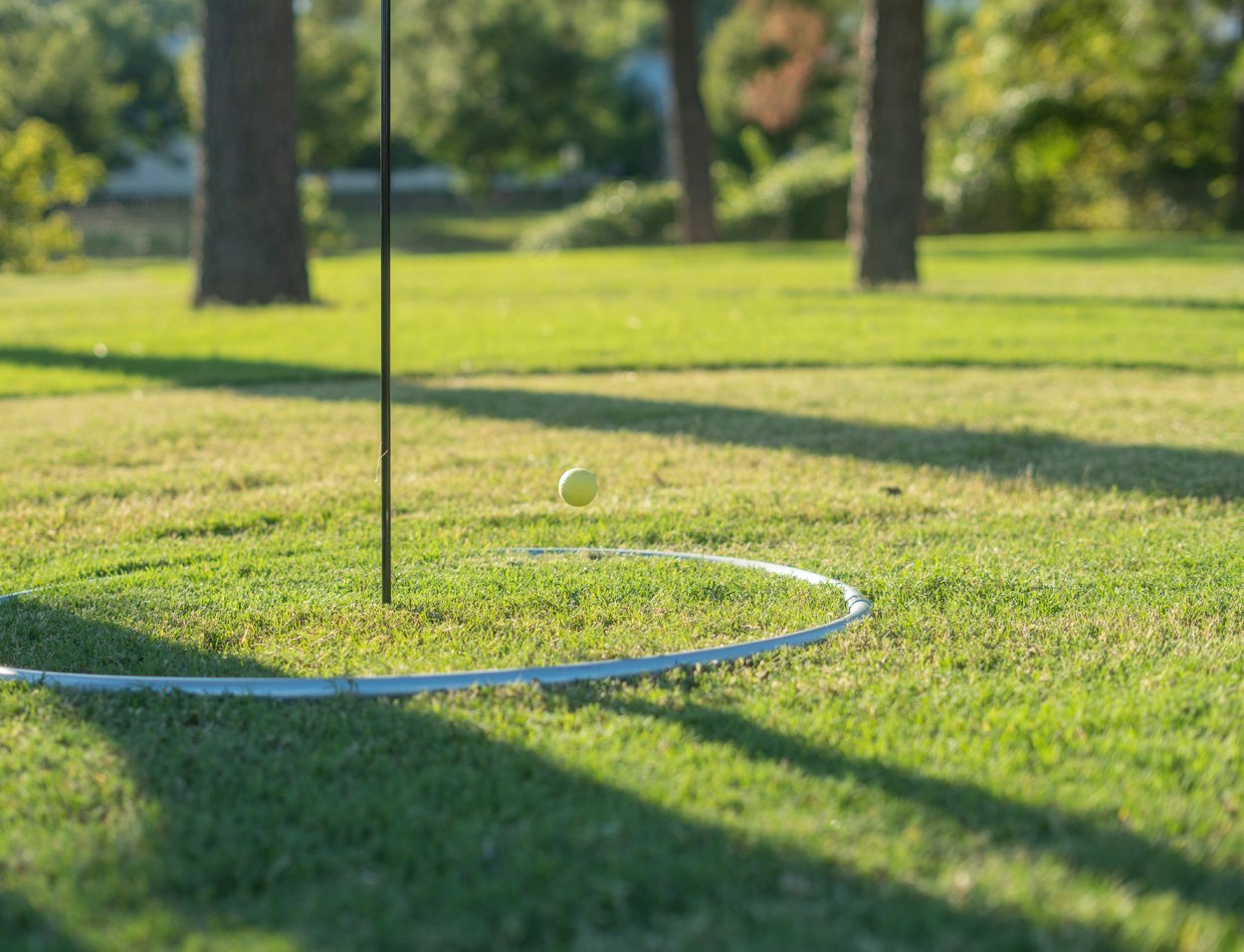
How to Play
Wedge is easy to play. The rules are simple.
The rules of Wedge are essentially the same as g*lf, where the goal is to hit your Wedge ball from the tee-box to rest within the Wedge scoring ring. Each stroke of the club equals a point, and the fewer the points the better. However, Wedge is different from g*lf in three important ways:
In Wedge, players are only allowed to use one club for the entire round. Players typically will use a wedge club of some type, including pitching, sand, lob, and gap wedges, or even 9 irons.
Regular g*lf balls ARE NOT allowed. Instead, Wedge uses soft-flight golf ball that travel much less distance and won't damage things if your shot goes off the mark. To qualify as a Wedge ball, the ball must 1) weigh no more than 15 grams (0.529 ounces) and 2) be between 41 and 43 millimeters (1.61-1.69 inches). We recommend Almost Golf balls or Callaway HX Practice Golf Balls for the best results.
The target for Wedge is not a g*lf cup, but rather a Wedge scoring ring. You'll be using your Wedge club to hit the ball towards the hoop, until it comes to rest INSIDE the hoop.
Wedge is an outdoor game that can be played almost anywhere. It’s similar to g*lf but is accessible to players of all ages and skill levels. All you need is an open, grassy area, a Wedge ball, and a standard g*lfing wedge.
Before you begin, most players will draw to see who gets to hit first. It’s important that you mark your Wedge ball, as this will keep you from hitting the wrong ball during the course of play.
Players start between or behind the Tee Markers on the first hole of a course. But this isn’t g*lf, so no teeing up the ball! Using only a wedge club. Your objective is to hit the ball into the Scoring Ring. Whoever is furthest away from the Scoring Ring goes next, followed by the next furthest player, and so on. Each strike of the ball counts as a stroke, so it's important to stay on or below par to have the best chance at winning! But if you swing and don’t make contact with the ball, don’t worry, it doesn’t count as a stroke.
The player with the lowest score gets to tee up first at the next hole. The order of starting is always determined by the score of the last hole.
There are a few special rules you should know before hitting the course:
You can move your ball one club distance no closer to the hole. This can help you line up a better shot for your next swing!
If your ball lands out of bounds, your ball has landed in a penalty area. The player is not allowed to hit the ball and must take a drop. A drop means you, well, drop the ball at the point of entry just outside the out-of-bounds area. You’ll incur one extra stroke as a result.
If your ball lands near debris, you’re allowed to clear the area of obstructions such as leaves, sticks, and rocks, leaving your ball in the same spot.”
But if your ball lands on an area of the course not in a penalty area and is deemed unplayable, you must take an unplayable ball relief. This is the same as a drop but you do not incur a penalty stroke. If a player cannot use an unplayable ball relief, a penalty stroke must be taken and a ball placed in a playable area close to the original location.
When playing with other people, never hit a ball that isn’t yours. Doing so results in a penalty stroke for the offending player. The player whose ball is hit will take a drop at the original location but with no penalty stroke incurred. If the ball hits the flag or bounces out of the ring, it does not count as scoring.
But if the ball comes to rest outside the Scoring Area and is touching the ring, you do not have to hit the ball into the ring. Simply add one stroke to your score to complete the hole.
That’s it! Wedge is fun, simple, and accessible for everyone. You don’t have to be a pro g*lfer to play Wedge. All it takes is an attitude of fun, great friends, and, as always, only one club.

